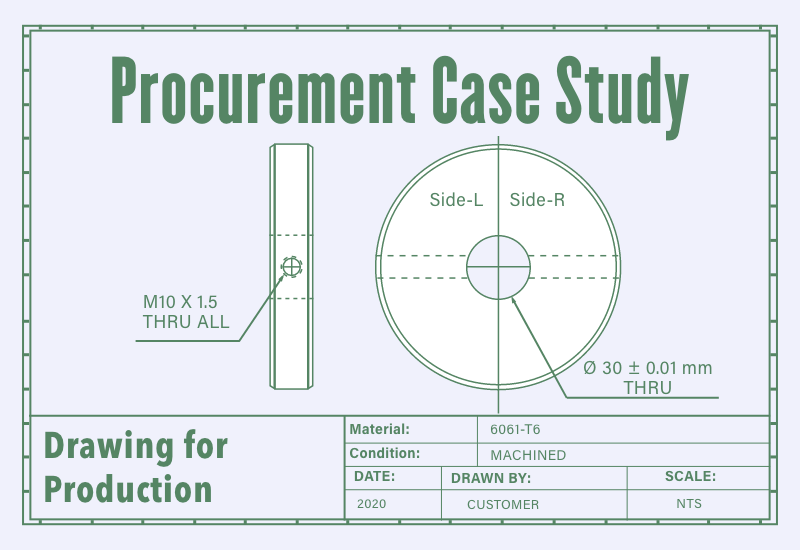- February 16, 2024
- Posted by: Rajneesh-Kumar
- Category: Manufacturing in India

A Procurement Mishap Unveiled: A Case Study
Introduction:
In this procurement case study, we delve into a scenario where miscommunication led to a significant issue in production.
Let’s explore what went wrong and how it could have been prevented.
The Initial Agreement:
A factory secured a new business opportunity to manufacture a component in Aluminium 6061-T6.
Per the agreement, the factory needed to submit five samples for approval before commencing mass production.
Sample Submission:
The factory produced and dispatched the samples to the customer.
Upon receiving them, the customer’s Quality Manager passed them on to the Quality Inspector for evaluation.
Quality Inspection Process:
The Quality Inspector conducted tests, including assembling the component with a mating part and tightening an M10 X1.5 screw.
All seemed well during this initial inspection.
Misinterpretation of Drawing:
However, a critical error occurred due to misinterpretation. The supplier overlooked the drawing specifications, believing that the M10 threads were only up to Ø30.
In reality, the drawing indicated “M10 X 1.5 THRU ALL,” meaning the threads should span the entire diameter of the component.
Customer Oversight:
On the customer’s end, they failed to review the drawing thoroughly. Instead, they focused solely on whether the component was fit for use.
With only one screw assembly in their factory, they deemed it satisfactory without considering the full extent of the threading requirement.
Consequences of Miscommunication:
The oversight led to a significant discrepancy between expectations and reality. While the component appeared functional during initial tests, it failed to meet the complete threading specification outlined in the drawing.
Responsibility and Warranty Claims:
Now faced with warranty claims, the question arises: who bears responsibility for this oversight—the supplier or the customer?
This dilemma highlights the importance of clear communication and thorough verification processes in procurement agreements.
Conclusion:
In this case study, we witnessed how miscommunication and oversight can have far-reaching consequences in procurement and production processes. Both suppliers and customers must prioritize clarity and attention to detail to prevent such issues and uphold product quality standards.
——————————————————————————————————

